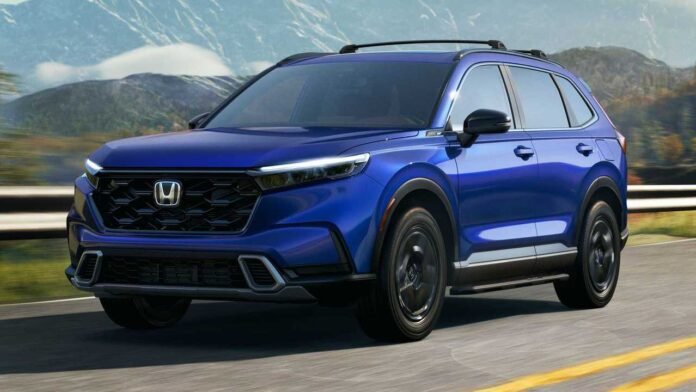The Japanese company has announced its Honda CR-V, a vehicle that will use hydrogen fuel cells and go on sale in Japan later this year. Naturally, it’s not fully visible because the prototype is covered in a camouflage wrap that looks like molecules changing into circuit boards. It should come as no surprise that the CR-V will primarily resemble the current gas and hybrid variants in shape.
Features of Hydrogen-Powered Honda CR-V
The hydrogen fuel cell in the Honda CR-V FCEV is designed to run the vehicle by converting compressed gas into electrical power. It does, however, differ from other hydrogen fuel cell cars such as the Hyundai Nexo and Toyota Mirai due to the presence of a plug-in lithium-ion battery pack. With the exception of the gasoline component, it will operate similarly to a plug-in hybrid.

This implies that the Honda CR-V will be able to operate only on that battery before the dual H2 tanks activate for an as-yet-undetermined amount of miles. This is supposed to allay worries about the scarcity of hydrogen filling stations in the United States. Additionally, the CR-V will be able to export power. In the attached video, a driver is seen stopping while traveling through Japan’s beautiful seashore scenery to plug in a portable coffee maker.
It should be mentioned that Japan does not sell the sixth-generation Honda CR-V currently in production. Thus, when it reenters that market, it might only be available as a hydrogen fuel cell electric vehicle. In the United States, gasoline and hybrid CR-Vs will still be offered. The FCV may be visually identified from other Honda CR-Vs thanks to its charging port door located on the left front fender and its transparent taillights.
According to Honda, only 2,000 of these vehicles will be produced each year. Honda has a technology-sharing agreement with General Motors, so some of that allocation will go to them. The second-generation NSX was produced at Honda’s Performance Manufacturing Center, or PMC, in Ohio, and these will also be produced there. Unofficially, the Clarity fuel cell vehicle—which was phased out in 2021—is replaced by the CR-V. Whether it will be available outside of California is unknown at this time.


